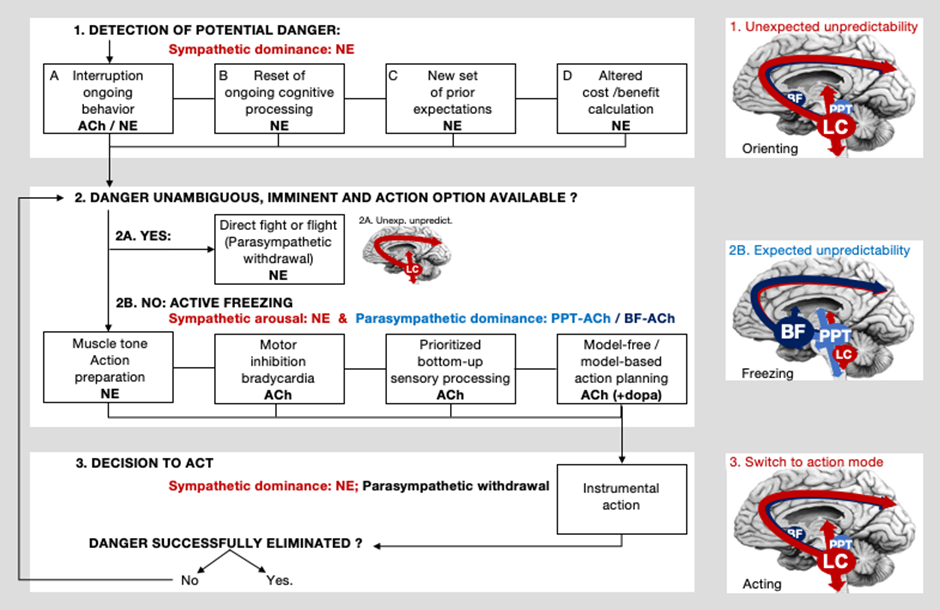Adaptive Locomotion of Soft Microrobots
Networked Control and Communication
Controller Learning using Bayesian Optimization
Event-based Wireless Control of Cyber-physical Systems
Model-based Reinforcement Learning for PID Control
Learning Probabilistic Dynamics Models
Gaussian Filtering as Variational Inference
Frozen and unfrozen: body and brain in (para)-sympathy

Naturalistic observations show that decisions to avoid or escape predators occur at different spatiotemporal scales, and are supported by different computations and neural circuits. At their extremes, proximal threats are addressed by a limited repertoire of reflexive and myopic actions, reflecting reduced decision and state spaces and model-free (MF) architectures. Conversely, distal threats allow increased information processing supported by model-based (MB) operations, including affective prospection, replay, and planning. However, MF and MB computations are often intertwined, and under conditions of safety the foundations for future effective reactive execution can be laid through MB instruction of MF control. Together, these computations are associated with distinct population codes embedded within a distributed defensive circuitry whose goal is to determine and realize the best policy.
We study various of these states. For instance, post-encounter threat --- when a prey has detected a predator, but the predator is apparently not interested --- leads to freezing. This is a unique situation, which upon threat detection, allows evidence to be gathered, response possibilities to be previsioned, and preparations to be made for worst case fight or flight. We propose that, rather than reflecting a passive fear-state, its particular somatic and cognitive characteristics help conceal overt responses, while optimizing sensory processing and action preparation. Critical for these functions are neurotransmitters noradrenaline and acetylcholine, which modulate neural information processing but also control sympathetic and parasympathetic branches of the autonomic nervous system.
However, the interactions between autonomic systems and the brain during freezing, and the way that they jointly coordinate responses, remain largely underexplored.
Publications